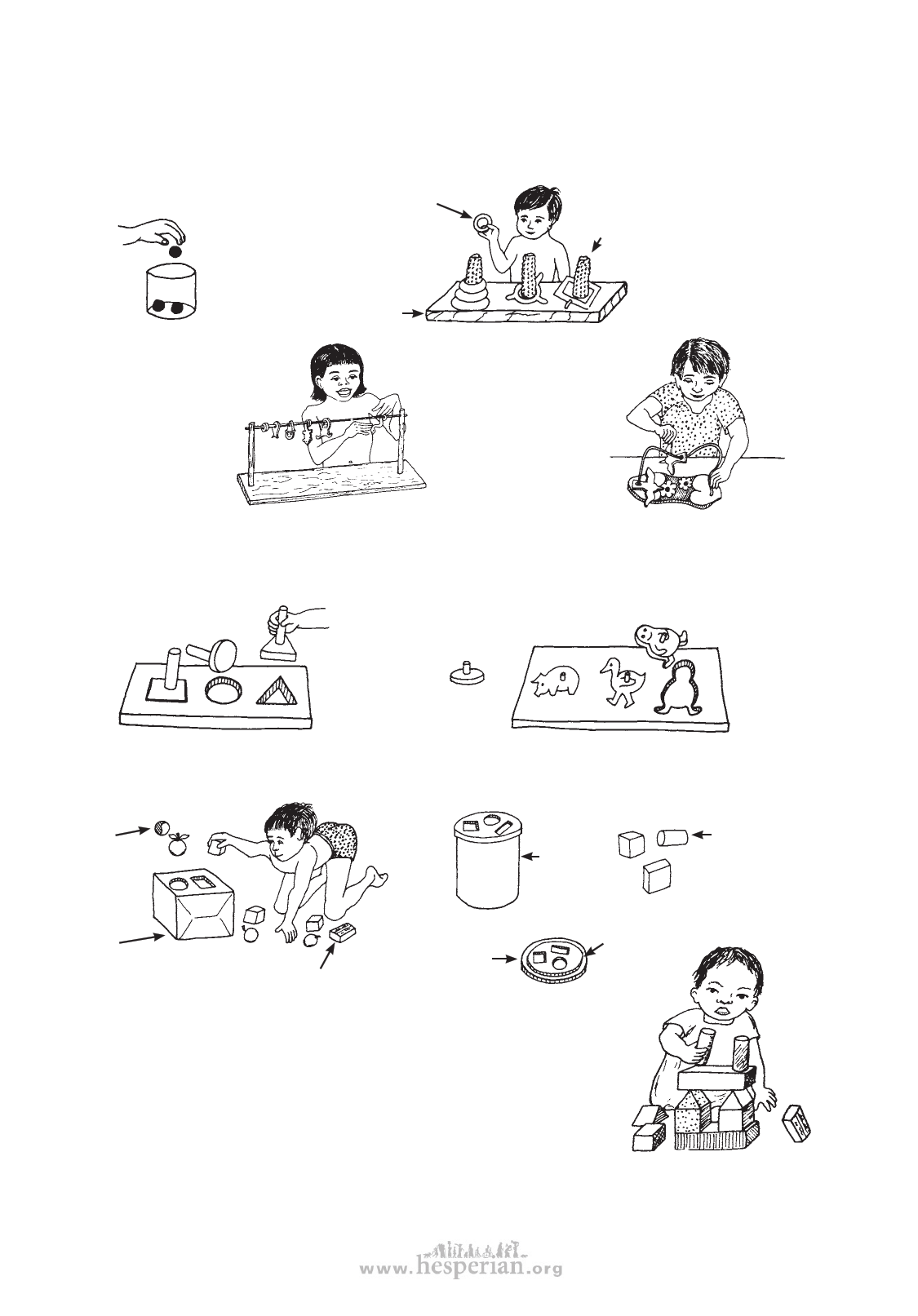
318 chapter 35
TOYS TO DEVELOP A CHILD’S MIND AND HAND-EYE COORDINATION
Learning to fit things into things
Start simple—dropping
objects into a jar, then
taking them out again.
As the child develops, make things more complex.
rings of wood,
woven string,
baked clay, old
bones, or buckles
base of wood or
several layers
of cardboard
wood or
corncob
Note: Rings can
be of different sizes,
colors or shapes so
that the child can
also learn to match
these.
To help develop controlled
movement of the hands and
arms, the child can move
beads or blocks along
a rod or wire.
Using animals or
funny figures makes
the exercise more
fun. Other children
will be more likely
to join in the game.
Matching games
The child can match objects of similar shape,
size, and color.
Small pegs glued onto cut-out pieces
help develop fine hand control.
peg
Start with simpler games with square or
round figures.
ball,
round
fruit,
or pill
bottle
cardboard
box
blocks or match boxes
Then progress to more complicated games with
different shaped figures.
a big
tin can
lid of wood,
or layers
of cardboard
lid (upside down)
Inside ring
tightly fits
into can.
3 blocks of
different
colors and
shapes
Puzzles
Jigsaw and block puzzles and building blocks also help a
child learn how shapes and colors fit together. Suggestions
for making different puzzles are on p. 476.
Many more ideas for simple toys are included in Chapter 49, “A Children’s Workshop For
Making Toys,” p. 463 to 476.
Disabled village Children